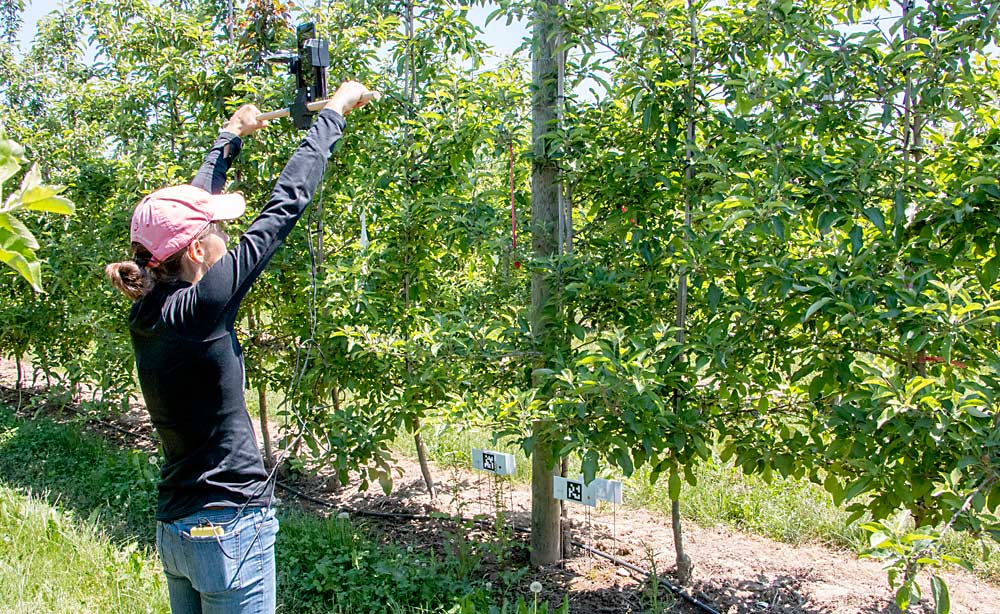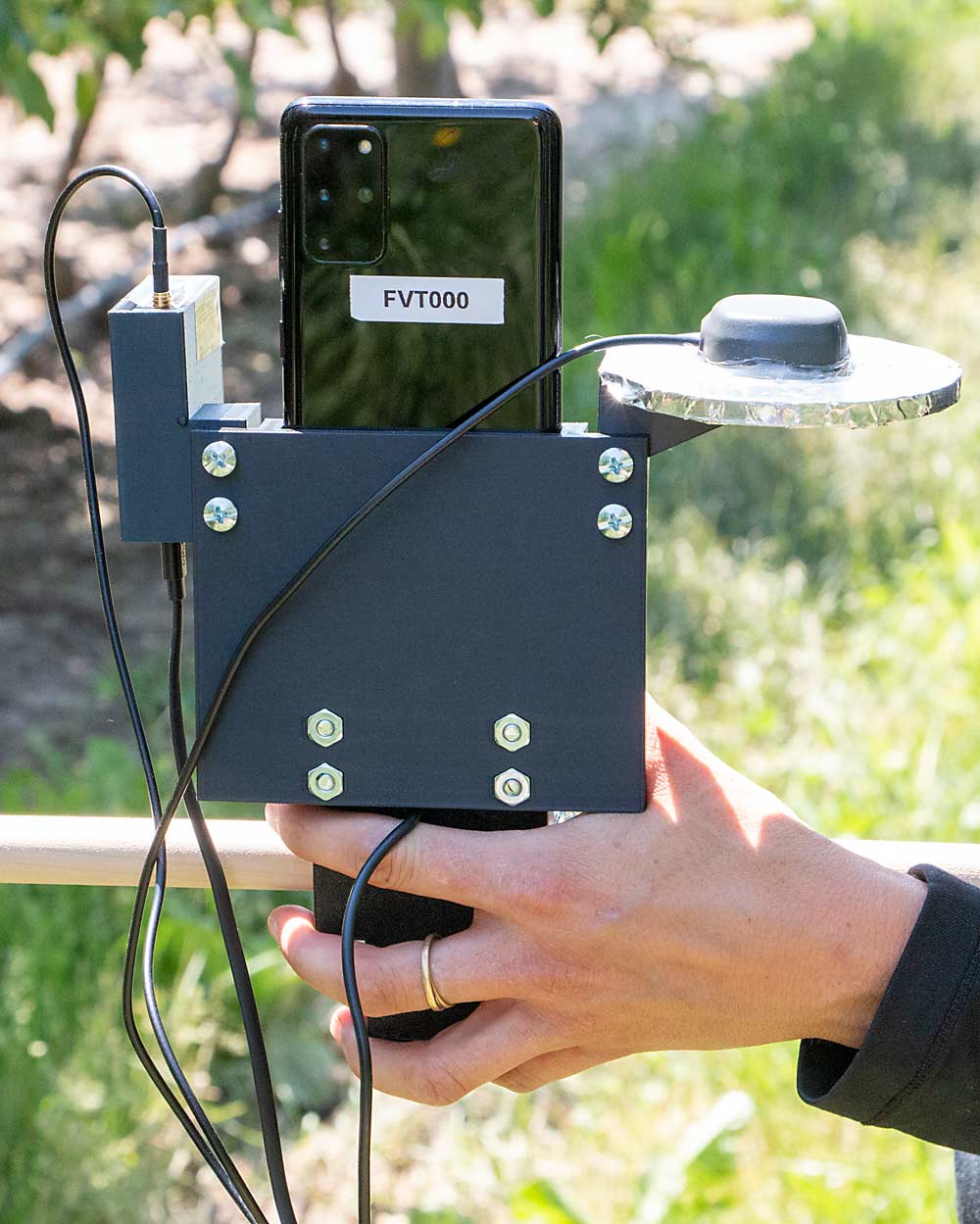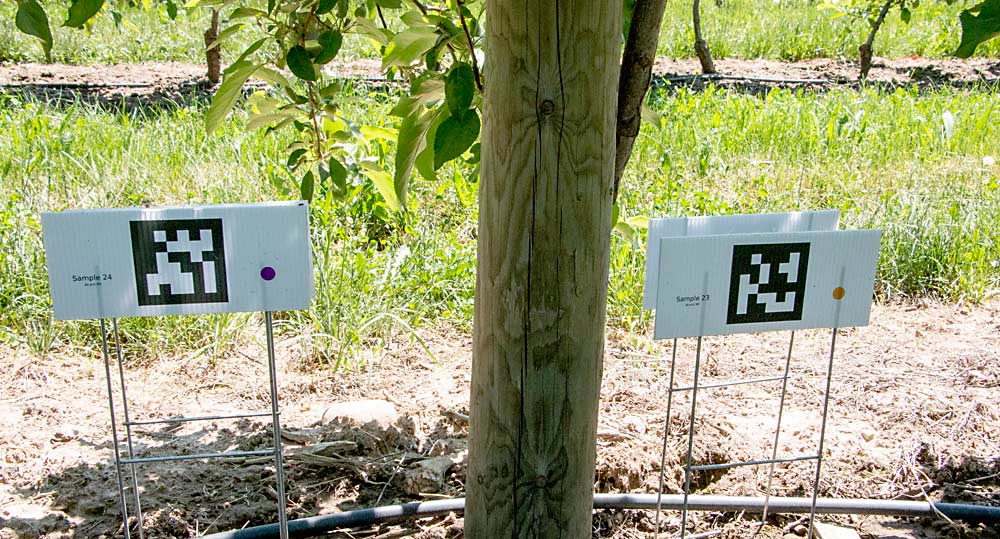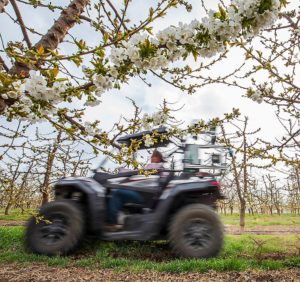
Farm Vision Technologies, founded in Minnesota in 2017, has been testing and refining a handheld crop load management tool for the past few years. It is now available to growers, said CEO and co-founder Patrick Plonski.
The handheld Farm Vision tool contains a Samsung phone with computer vision software, attached to a more sensitive GPS sensor, he said.
“We considered using just a smartphone but weren’t satisfied with the data,” Plonski said. “We were happy adding a small amount of consumer-grade hardware. We view it as the simplest possible system that can get good accuracy.”
Director of business development Scott Erickson said it’s difficult for growers to count and size fruit on a consistent basis; measuring fruitlets by hand is time-consuming, laborious and not particularly accurate. The Farm Vision tool helps them in a couple of different ways.

For thinning decisions, the grower marks off a section of about five trees, or roughly 15 feet long. The grower then faces the canopy, pushes record and moves the camera in an up-and-down motion while walking along the row sample. It takes about a minute to get the data needed to use the fruitlet growth model, Erickson said.
For estimating harvest yield, the grower faces the camera toward the fruiting wall at about eye level, so the whole tree is in view, pushes record and walks or drives the length of the row. If the unit is mounted on a vehicle, speeds of up to 10 miles per hour work fine, depending on the terrain and vehicle suspension, he said.
Erickson said the Farm Vision tool can achieve a fruit count estimate that’s within 5 percent of the actual number of fruit harvested.
Farm Vision’s crop load and fruit size estimates can help growers make thinning and pruning decisions, monitor crop loads, hit target fruit counts and predict harvest size, Plonski said. Accurate crop load information also aids managing harvest logistics while using the smallest amount of labor and chemicals possible.
“If you can get the basic piece right, counting and sizing fruit, you can do a lot of things,” Erickson said.
The Farm Vision team has been testing its computer vision technology at grower John Jacobson’s Minnesota orchard for the past few years. When they first asked Jacobson what he wanted from vision technology, he pointed at a tree and said, “Tell me how many apples are on this tree.”

“The more information you have about apples on the tree, and what’s in the bin, the more informed your management decisions,” Jacobson said.
The Farm Vision tool starts counting fruit at the fruitlet stage. They’re working on blossom counting, too, Plonski said.
Farm Vision charges on a case-by-case basis, depending on the level of usage, Erickson said.
Jacobson is excited about the technology’s potential. After years of refinement, Farm Vision can now count apples on a tree with extreme accuracy, he said.
“It’s really awesome stuff,” Jacobson said. “Knowing the amount of bushels you’ll have, the apple size profile, variety breakdown — that’s money in the bank, especially for a direct-market operation like ours.”
—by Matt Milkovich







Leave A Comment